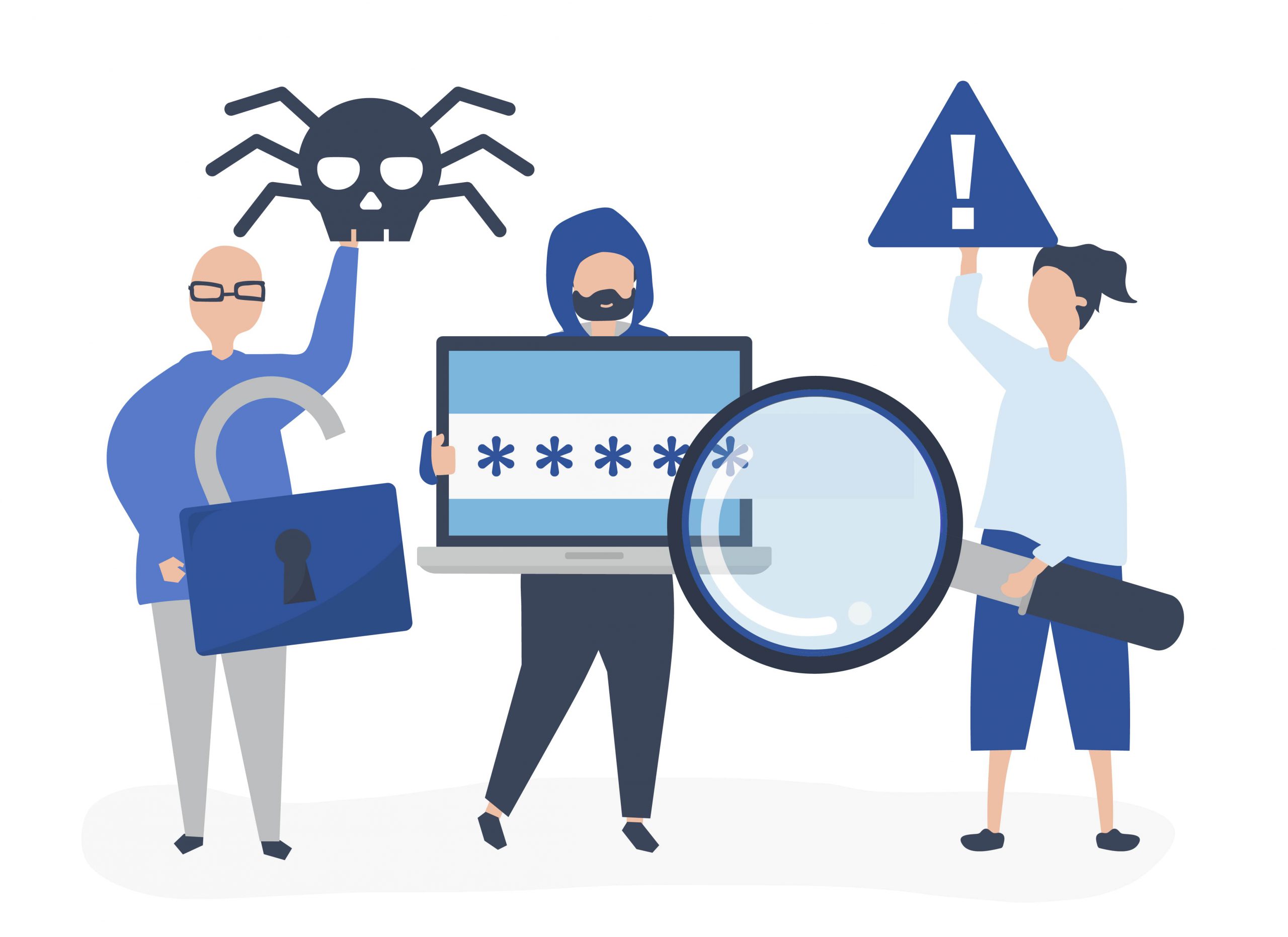A vital component of the majority of contemporary software, web, and mobile applications are application programming interfaces, or APIs. They facilitate business processes, enable seamless app integrations, grant access to databases, and more.
But this also makes APIs a very attractive target for hackers. Safeguarding your data is only one aspect of protecting your APIs from attacks; another is maintaining the dependability and integrity of your services. We’ll discuss the most prevalent kinds of API attacks in this article, along with prevention measures.
In a hurry? Here are the main strategies to stop API attacks:
- Implement strong authentication and authorization.
- Use HTTPS for data encryption.
- Use rate limiting and throttling.
- Validate all input data.
- Regularly update and patch.
- Monitor and log API activity.
- Use API protection software and gateways.
- Perform security tests and audits.
The Rise in APIs Increasing Attack Risks
Software development, cloud services, Internet of Things (IoT) apps, and other fields have all heavily incorporated APIs. Companies can now develop software more quickly and creatively without having to build everything themselves thanks to their rapid proliferation. However, this has unintentionally raised the possibility of attacks and API abuse.
Any company that uses application programming interfaces (APIs) to enable data exchange between systems is vulnerable, including healthcare providers and e-commerce platforms that use APIs for patient data management and payment processing, among others.
Over time, API attacks have only gotten more complex. Typically, vulnerabilities such as weak authentication, slack access controls, and exposed endpoints are exploited by attackers. For instance, ten million Optus customers were impacted by a data breach that occurred due to a vulnerability in an API of Optus, the third-largest telecommunications company in Australia.
Common Types of Attacks on APIs and How to Stop Them
ATO & Brute Force
Brute force attacks and account takeover (ATO) are frequent dangers in the world of APIs. An ATO attack occurs when a scammer obtains unauthorized access to a user’s account, frequently by guessing or using credentials that have been lost or stolen. Attempting to guess login credentials repeatedly is known as a brute force attack.
Because they can grant access to important data from user accounts, brute force and ATO attacks are popular among fraudsters. Additionally, they are not difficult to carry out, in part because fraudsters use tools that automate mass login attempts and because a large number of credentials are already available on the dark web.
To put a figure on it, more than 50% of online retailers reported seeing an increase in ATO attacks in 2022. All industries are susceptible to ATO and brute force attacks, but due to the value of user accounts, the financial and e-commerce sectors are especially at risk.
Prevention Methods
You can drastically lower the likelihood of successful ATO and brute force attacks against your APIs by implementing the following strategies:

- Multi-Factor Authentication (MFA): By implementing MFA, you can increase security and make it more difficult for attackers, even those with login credentials, to access your APIs without authorization.
- Strong Authentication Protocols: Make use of strong authentication techniques like JWT (JSON Web Tokens) or OAuth to guarantee that only authorized users can access the APIs.
- Rate Limiting: Limit the quantity of API requests that can be made in a given amount of time from a single IP address. This makes using brute force attacks considerably more difficult.
- Account Lockout Policies: To stop people from continuously guessing login credentials, temporarily lock user accounts after a predetermined number of unsuccessful attempts.
Credential Stuffing
Stuffing credentials is frequently the first step towards an ATO attack. This kind of cyberattack involves the use of compromised account credentials from data breaches by attackers to obtain unapproved access to user accounts and application programming interfaces.
Credential stuffing is common because so many credentials are either reused or already public, similar to ATO and brute force attacks. If successful, it can also be fully automated and yield profitable data.
Credential stuffing is so common that in some countries in 2022, the traffic originating from it exceeded the traffic originating from legitimate login attempts. It impacts businesses of all sizes across all sectors, including e-commerce, gaming services, and social media websites.
Prevention Methods
In addition to the advice given in the section above, it is advisable to employ a variety of defensive techniques to thwart credential stuffing attacks:
- Robust Credential Screening: To recognize and report compromised credentials, routinely compare user credentials to databases known to contain compromised data.
- Advanced User Authentication: To improve security over and beyond the use of standard username and password combinations, use sophisticated authentication techniques like biometrics or one-time passwords.
- Device Fingerprinting: Monitor and examine the devices being used for login attempts in order to pinpoint and prevent those that are frequently linked to fraudulent activity.
- Regular User Password Resets: Encourage or mandate regular password changes to shorten the time window during which credentials that have been compromised can be used.
Denial of Service & DDoS
The goal of denial of service (DoS) and distributed denial of service (DDoS) attacks is to overload the target’s infrastructure with an excessive amount of traffic in order to prevent regular traffic from reaching a targeted server, service, network, or API. DDoS attacks are harder to stop than DoS attacks because they leverage multiple compromised computer systems.
Due to the abundance of botnets and DDoS-for-hire services that can carry out these attacks automatically, DDoS attacks are simple to launch. DDoS attacks are a well-liked means of demanding ransom from companies because they have the power to completely take down websites or services.
The scale of DDoS attacks is only increasing. When Google’s DDoS Response Team saw an attack peaking at 398 million requests per second in October 2023, a new DDoS record was set. It’s possible that the record has already been surpassed by the time you read this.
Prevention Methods
You should think about the following tactics to defend against DoS and DDoS attacks:
- Network Redundancy: Your network infrastructure should be redundant to handle surges in traffic and keep services running in the event of an attack.
- Scalable Infrastructure: During a DDoS attack, make use of cloud-based services that are scalable and capable of distributing heavy traffic loads.
- Geo-Blocking: Identify and block traffic from areas that are known to be sources of DDoS attacks but are unrelated to your business.
- Content Delivery Networks (CDNs): Distribute the load for content delivery and sift through DDoS attacks with CDNs.
Vulnerability Scanning
A sort of cyberattack known as vulnerability scanning occurs when attackers methodically search web applications and APIs for security flaws or vulnerabilities. Vulnerability scanning is frequently the first step that attackers take to map out potential points of entry and weaknesses in your systems, in contrast to other attacks that directly exploit known vulnerabilities.
Vulnerability scanning can be fully automated and doesn’t cost much, if any, like almost all other attacks on this list. When a vulnerability is found, it gives the attacker quick access to important information or command over the system.

Prevention Methods
Adopt the following procedures to protect yourself from vulnerability scanning and potential follow-up attacks:
- Patch Management: Update all software with the most recent security patches and updates, including APIs and the dependencies they require.
- Secure Coding Practices: Adhere to secure coding standards to reduce vulnerabilities in your API right away.
- Regular Security Audits and Assessments: To find and fix any possible vulnerabilities in your API infrastructure, regularly audit its security and vulnerability assessments.
- Anomaly Detection: To find odd patterns that might point to a scanning attempt, use anomaly detection systems.
Carding Attacks
Carding attacks are when credit card details are stolen and used fraudulently by third parties. Attackers usually use automated tools to test credit card details on multiple e-commerce and online payment platforms after obtaining them from data breaches, phishing campaigns, or the dark web.
To avoid being discovered, carding attacks are frequently dispersed over multiple sites. The first objective is to identify which card details are still active and valid for use in larger fraudulent transactions. Financial institutions, e-commerce platforms, and online services and subscriptions are the industries most at risk.
Businesses lose a lot of money annually due to card fraud. Between 2020 and 2021, there was a more than 10% increase in card fraud losses, costing businesses worldwide over $30 billion. Carding attacks not only cost you money, but they also harm your brand and erode the confidence your clients have in you.
Prevention Methods
Use the following strategies to stop carding API abuse:
- Transaction Monitoring: Keep an eye out for any unusual patterns in the transactions, such as repeated unsuccessful card payments connected to the same IP address.
- Velocity Checks: Use velocity checks to identify a number of transaction attempts made quickly, as this is a sign of carding activity.
- Strong Authentication for Transactions: When conducting online transactions, use extra authentication techniques, such as 3D Secure, to confirm the cardholder’s identity.
- Limit Payment Attempts: Limit the quantity of payment attempts that can be made from a particular account or IP address in order to lessen the power of brute force attacks.
Scraping & Data Harvesting
The terms “scraping” and “data harvesting” describe the automated processes used to retrieve vast quantities of data from websites and APIs. While scraping can occasionally be helpful or even benign—for example, when search engine bots index web content—it turns malicious when it’s used to steal confidential information, jeopardize a company’s competitive edge, or violate copyright.
Bots are designed to systematically access a website or an API and download large amounts of data in a scraping attack. Product information from online retailers, user profiles from social media platforms, and other valuable data that can be sold, used in phishing scams, or exploited for competitive advantage are examples of this kind of information.
Prevention Methods
Take into consideration putting the following tactics into practice to protect against data harvesting and scraping:
- User Behavior Analysis: Track and examine user activity to spot and prevent anomalous access patterns, like repeatedly requesting the same piece of data.
- Content Protection Measures: Put safeguards in place to prevent content from being downloaded directly, like turning off right-click options or employing image overlays.
- API Throttling: Limit the quantity of data that can be accessed in a specific amount of time by throttling API requests.
- Data Encryption: To make it more difficult for scrapers to extract useful information, encrypt sensitive data.
How to Identify an API Attack
Rapid detection of an API attack is essential to reducing its effects. The following are typical signs that point to the possibility of an attack on your API:
- Unusual Traffic Patterns: An attack may be indicated by an abrupt increase in traffic, especially from unfamiliar or new IP addresses.
- Frequent Login Failures: Several unsuccessful attempts to log in or reset passwords may indicate a brute force or credential stuffing attack.
- High Error Rates: Increased server errors (such as 5XX errors) could indicate that an attacker is attempting to take advantage of security holes.
- Unusual Outbound Data Traffic: If your API is sending a lot of data to places you’ve never heard of, it might be a sign of data harvesting.
- Slow Performance: A DoS or DDoS attack could be the cause of an unexpected slowdown in API performance, in which case it needs to be looked into right away.
- New or Unrecognized Admin Accounts: Unexpected admin account creation might be a sign of a successful breach.
- Suspicious API Requests: Requests that deviate from standard procedures, like those with unusual headers or a high frequency of requests, may indicate malicious activity.
- Alerts from Security Tools:The first indication of an attack is frequently a notification from firewalls, intrusion detection systems, or other security tools.
- Unexpected Changes in Database: Unexpected additions or deletions from your database might be the consequence of an effective hack.
- Complaints from Users: User reports of fraudulent transactions, altered account information, or trouble logging in may be signs that your API has been compromised.
- Irregularities in API Performance Metrics: A problem may be indicated by deviations from standard API usage metrics, such as query response times and request patterns.
- Geographical Irregularities: It may indicate an attack if you are getting a lot of traffic from nations where you don’t normally have users.
- Changes in File Integrity: Changes to configurations or system files that were not made by your team may indicate a breach.
- Failed Two-Factor Authentication Attempts: Several unsuccessful attempts to get around MFA can be a serious red flag.
- API Endpoint Scanning: Finding repeated attempts to log in to different API endpoints could be a sign that someone is looking for a weak spot.
How to Reduce the Chance of Attacks by APIs
It takes a combination of strong security measures, awareness, and the application of cutting-edge technologies to effectively mitigate the risk of API attacks. Utilizing bot protection software is crucial for defending APIs against automated threats like credential stuffing, DDoS attacks, and scraping, in addition to best practices for API security. These tools allow legitimate traffic through while identifying and blocking malicious bot activity.

The right bot protection solution offers features like:
- Threat intelligence in real time to find and stop malicious IP addresses.
- Analyzing behavior to discern between people and automated systems.
- CAPTCHA questions to confirm the legitimacy of submissions.
- Constant observation and identification of anomalies.
Regular security audits and assessments also assist in finding and fixing vulnerabilities in your API ecosystem before they can be used against you. In-depth analyses of your API infrastructure and simulated cyberattacks to gauge how well your security configuration is working should be part of these.
To safeguard your APIs, you should also have robust authorization and authentication procedures in place. To ensure that the appropriate users have the appropriate level of access, this also includes MFA, OAuth, token-based authentication, and role-based access control (RBAC).
Final Verdict – How to Secure Your APIs
Safeguarding your APIs is not only a technical but also a commercial requirement. The growing complexity of cyberattacks, particularly those targeting APIs, necessitates a proactive and comprehensive security strategy. Several important lessons learned:
- Use Multiple Defense Strategies: Depending just on one line of defense is insufficient. Robust protection necessitates a layered security approach that includes robust authentication procedures, frequent security audits, bot protection software, and continuous monitoring.
- Regular Updates and Training: Protecting your APIs requires you to keep your software up to date and your employees well-versed in the most recent security procedures.
- Focus on User Education: By teaching your users about security best practices, you can help stop attacks like phishing and social engineering that take advantage of user behavior.
- Invest in Advanced Technologies: A considerable advantage in identifying and reducing attacks can be gained by utilizing cutting-edge security solutions and advanced technologies like artificial intelligence and machine learning for anomaly detection.
Maintaining vigilant security procedures, implementing advanced defense tools, and improving security procedures are all necessary to keep your APIs safe from attacks. However, you can safeguard your digital assets, uphold client confidence, and guarantee the continuous operation of your services by taking a thorough and proactive approach to API security risks.

Andriy Kravets is writer and experience .NET developer and like .NET for regular development. He likes to build cross-platform libraries/software with .NET.



